Pain takes center stage when a canvas meets the brush or a wall is adorned with vibrant colors. Yet, beneath the artistic allure lies a canvas of potential hazards that can compromise not only the quality of the masterpiece but also the safety of those wielding the tools.
Whether a professional painter tackling a large-scale project or an enthusiastic DIYer giving their space a fresh look, understanding the risks associated with painting is paramount. From chemical exposures to potential falls, fire hazards, and environmental concerns, each paint stroke carries its own safety considerations.
In this comprehensive guide, we delve into the world of painting hazards – those lurking beneath the surface – and arm you with a palette of safety rules to ensure your artistic endeavors are visually captivating and secure for everyone involved. Join us as we explore the twelve distinct hazards associated with painting jobs, uncover the potential risks that might not immediately meet the eye, and uncover a spectrum of safety measures that, when skillfully applied, can transform a potentially dangerous task into a masterpiece of safety and creativity.
So, whether you’re an experienced professional painter or a curious novice, let’s venture into the world where creativity and safety seamlessly blend – where every brushstroke is artistry and responsibility.
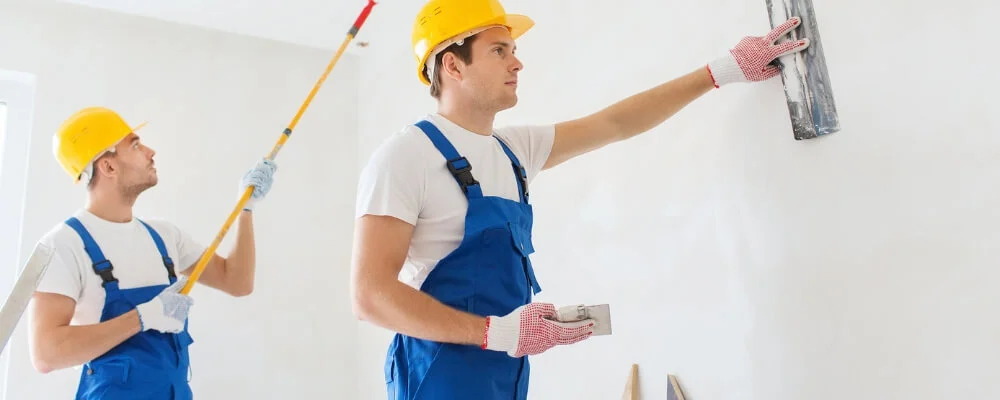
Hazards Associated With Painting Job
Painting jobs, while they might seem relatively straightforward, can involve several hazards that need to be addressed to ensure the safety of the workers and the environment. Here are some hazards associated with painting jobs:
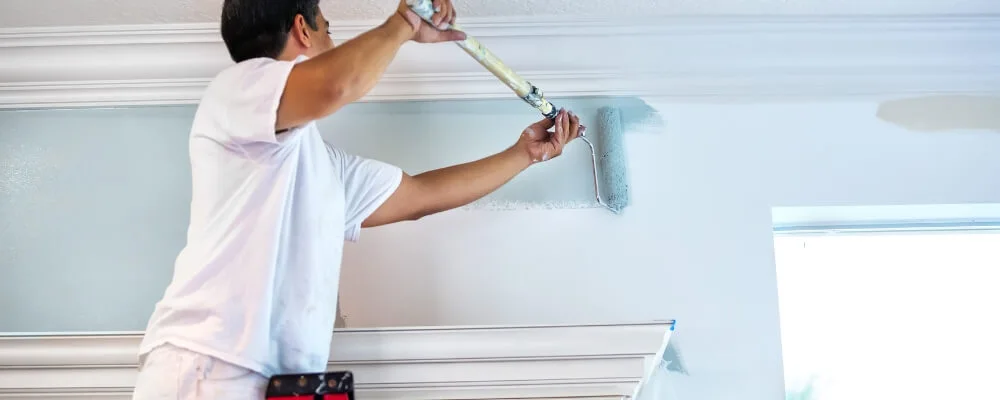
Safety Rules To Follow When Doing Painting Job
Painting can be a rewarding and creative task, but it’s important to prioritize safety to prevent accidents and health issues. Here are some safety rules to follow when doing a painting job:
1. Use Personal Protective Equipment (PPE)
Wearing the appropriate PPE to safeguard yourself from potential hazards is crucial when working in a painting job. Safety goggles shield your eyes from paint splatters and fumes, while gloves protect your skin from chemical exposure. If the painting environment involves significant fume production, such as oil-based paints, respiratory protection like masks or respirators might be necessary. Additionally, wearing protective clothing, such as coveralls, prevents direct contact with paints and solvents, minimizing skin irritation and chemical absorption.
2. Ensure Proper Ventilation
Working in well-ventilated areas is vital to dissipate paint fumes and maintain air quality. Open windows and use exhaust fans to facilitate air circulation, helping to disperse harmful fumes. When working in enclosed spaces, consider employing respiratory protection, like masks with appropriate filters, to prevent inhalation of concentrated fumes that might lead to respiratory discomfort or health issues.
3. Inspect and Maintain Equipment
Regularly checking and maintaining your painting equipment is essential to ensure its functionality and safety during use. Brushes, rollers, and sprayers should be inspected for any damage or wear that could compromise their performance. Faulty equipment might lead to uneven paint application or even accidents. Ladders should also undergo scrutiny to confirm stability, especially when working at heights. Keeping all equipment well-maintained reduces the risk of accidents and ensures smoother painting operations.
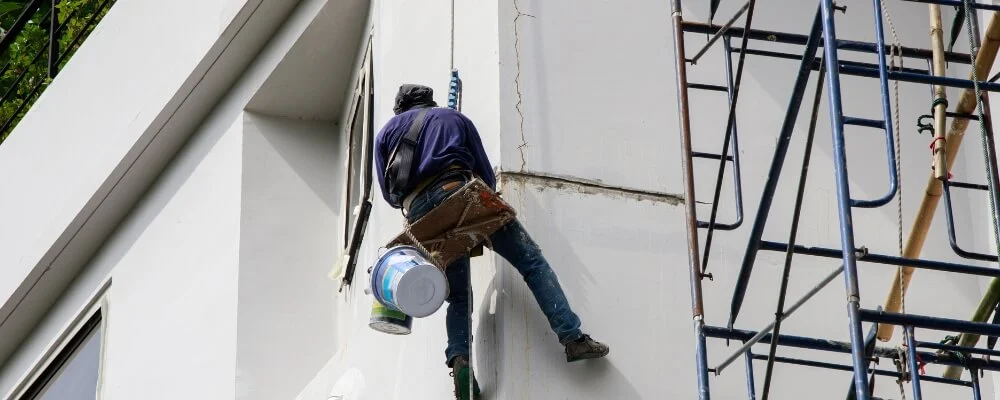
4. Practice Safe Ladder Usage
Ladder safety is paramount to prevent falls and injuries. Prioritize stability by ensuring the ladder is placed on a level surface and is appropriately secured. Maintain three points of contact (two feet and one hand or two hands and one foot) while ascending or descending the ladder. Never overreach, as this can destabilize the ladder. Use scaffolds or elevated work platforms for added stability if working at substantial heights.
5. Prevent Slips and Trips
Maintaining a clean and organized work area prevents slips, trips, and potential accidents. Promptly clean up any spills, drips, or paint splatters on the floor. Keep walkways clear of debris, cords, or equipment to eliminate tripping hazards. Eliminating clutter and promptly addressing spills creates a safer work environment for everyone involved.
6. Handle Chemicals Safely
Proper handling of paints and solvents minimizes the risk of chemical exposure. Familiarize yourself with the labels and Material Safety Data Sheets (MSDS) of your chemicals. Follow recommended storage guidelines to prevent leaks and spills. When pouring or mixing chemicals, do so in well-ventilated areas to reduce inhalation risk. If skin contact occurs, rinse with water immediately. Always wash your hands thoroughly after handling chemicals.
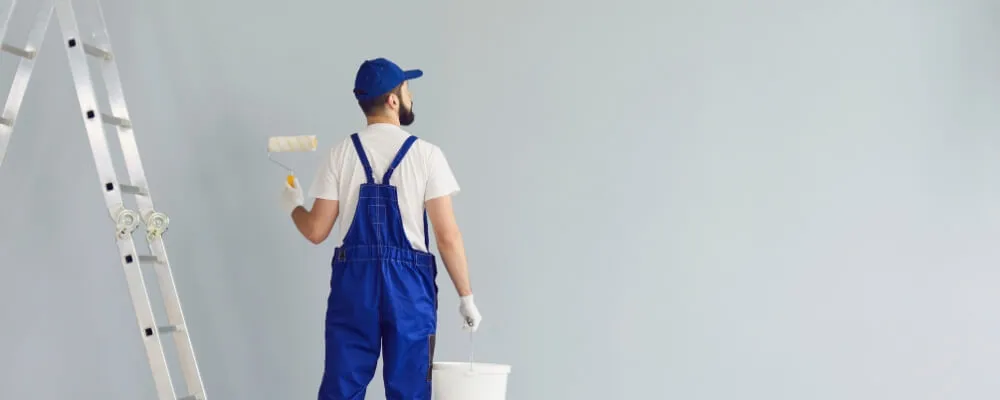
7. Use Adequate Lighting
Ensuring proper lighting in your work area is essential to your paint job’s safety and quality. Insufficient lighting can lead to accidents, increasing the likelihood of trips, slips, and other mishaps. Good visibility is crucial for accurate paint application, as it helps you identify imperfections or missed spots. Adequate lighting reduces eye strain and fatigue, creating a more comfortable and effective working environment.
8. Minimize Lead Exposure
When working with older structures, it’s important to consider the possibility of lead-based paint. Lead exposure poses serious health risks, especially if lead dust or paint chips are ingested or inhaled. To minimize exposure, follow lead-safe work practices. Use proper containment methods, such as plastic sheeting and drop cloths, to capture dust and debris. After completing the job, employ thorough cleanup procedures, including wet wiping and HEPA vacuuming, to ensure the removal of lead particles from the work area.
9. Proper Waste Disposal
Dispose of paint waste, used brushes, and empty containers per local regulations. Pouring paint down drains or onto the ground can contaminate water sources and harm the environment. Empty paint cans should be rinsed before disposal. If your paint is hazardous, such as oil-based paints, follow proper disposal protocols to prevent harm to the ecosystem and human health.
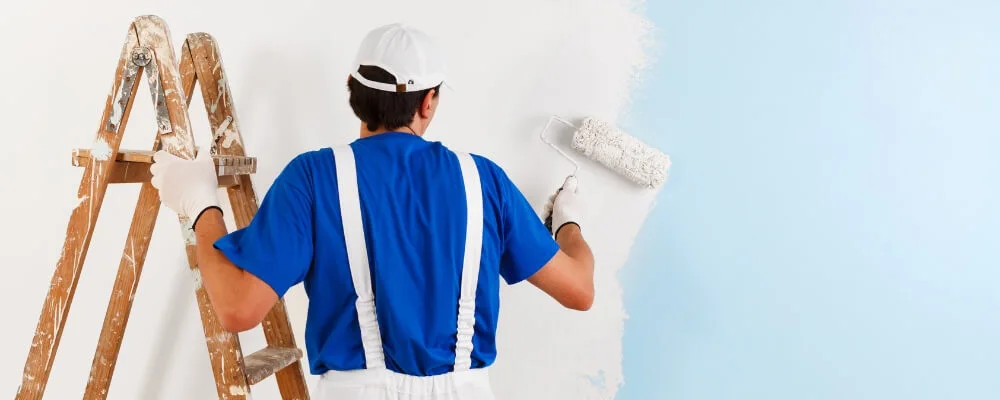
10. Fire Safety Precautions
Paints and solvents, particularly oil-based ones, are flammable substances. Keep flammable materials away from open flames, sparks, or heat sources to prevent fire hazards. When storing paints and solvents, choose a cool, dry area away from direct sunlight and ignition sources. Properly seal containers to avoid evaporation and the release of flammable vapors. Following fire safety precautions significantly reduces the risk of fire or explosion during your painting project.
11. Plan for Weather Conditions
For exterior painting projects, weather conditions play a significant role in the safety and quality of the paint job. Avoid painting during extreme temperatures, as they can affect paint application and drying times. Rain can lead to poor adhesion and uneven results, and windy conditions might cause debris or contaminants to interfere with the paint. Plan your work schedule to ensure that you have suitable weather conditions for optimal results and safety.
12. Follow Manufacturer Instructions
Manufacturers provide specific guidelines for paints and products to ensure the best results and user safety. Always read and adhere to these instructions for paint mixing ratios, application methods, and drying times. Deviating from these guidelines can lead to poor paint adhesion, uneven coverage, and compromised durability. Following manufacturer instructions also helps you work with the product’s intended properties, reducing the risk of accidents and ensuring a successful paint job.
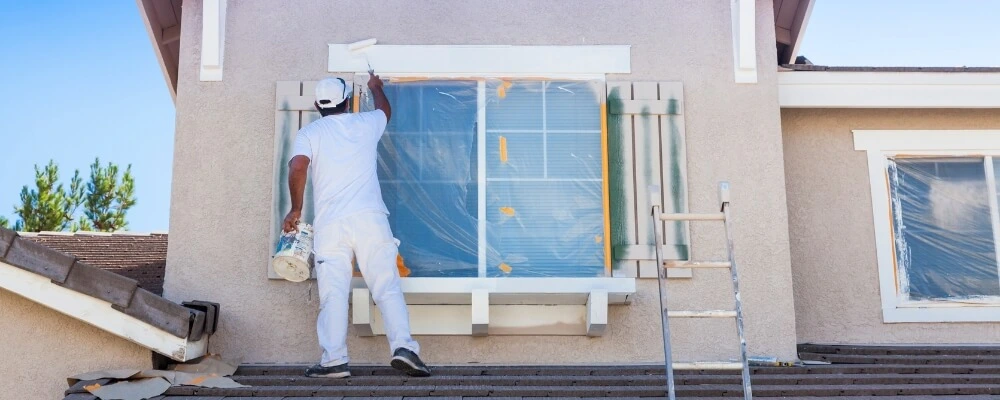
Conclusion
As we wrap up our exploration of the 12 different painting hazards and the crucial safety rules to follow, it becomes clear that the world of painting is more than just colors on a canvas or walls. It’s a delicate dance between artistic expression and the commitment to ensuring the well-being of those involved.
From the initial step of donning the appropriate personal protective equipment (PPE) to the final brushstroke guided by manufacturer instructions, each safety rule is a brushstroke, contributing to a masterpiece of secure and successful painting projects. The hazards we’ve uncovered, from chemical exposure to the potential dangers of working at heights, remind us that a painter’s skillset extends beyond artistic prowess to encompass safety awareness, meticulous planning, and unwavering adherence to best practices.
Remember, in the world of painting, safety isn’t an afterthought—it’s the canvas on which every creative endeavor is constructed. The colors might fade, but the impact of a well-executed painting job resonates long after the last coat has dried. By incorporating these safety rules into your painting routine, you’re not just creating aesthetically pleasing spaces. Still, you ensure that every stroke contributes to a safer environment for everyone involved.
So, as you pick up your brushes, rollers, and sprayers, let your commitment to safety be the palette that guides your journey through the intricate landscape of painting. Embrace each safety rule as an opportunity to weave creativity and responsibility into a seamless tapestry, where the final result is visually stunning and a testament to your dedication to the craft, the environment, and the well-being of all.

